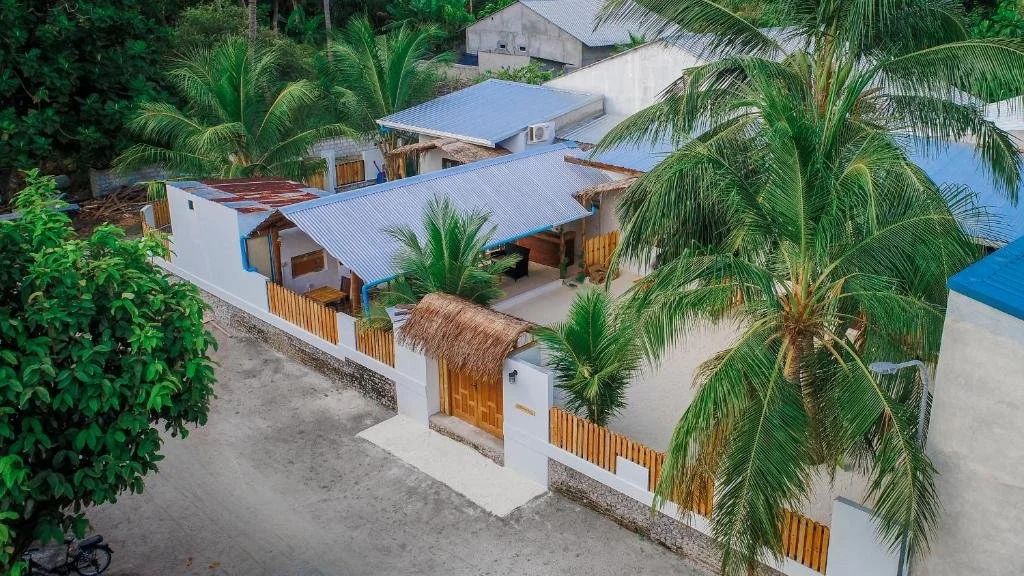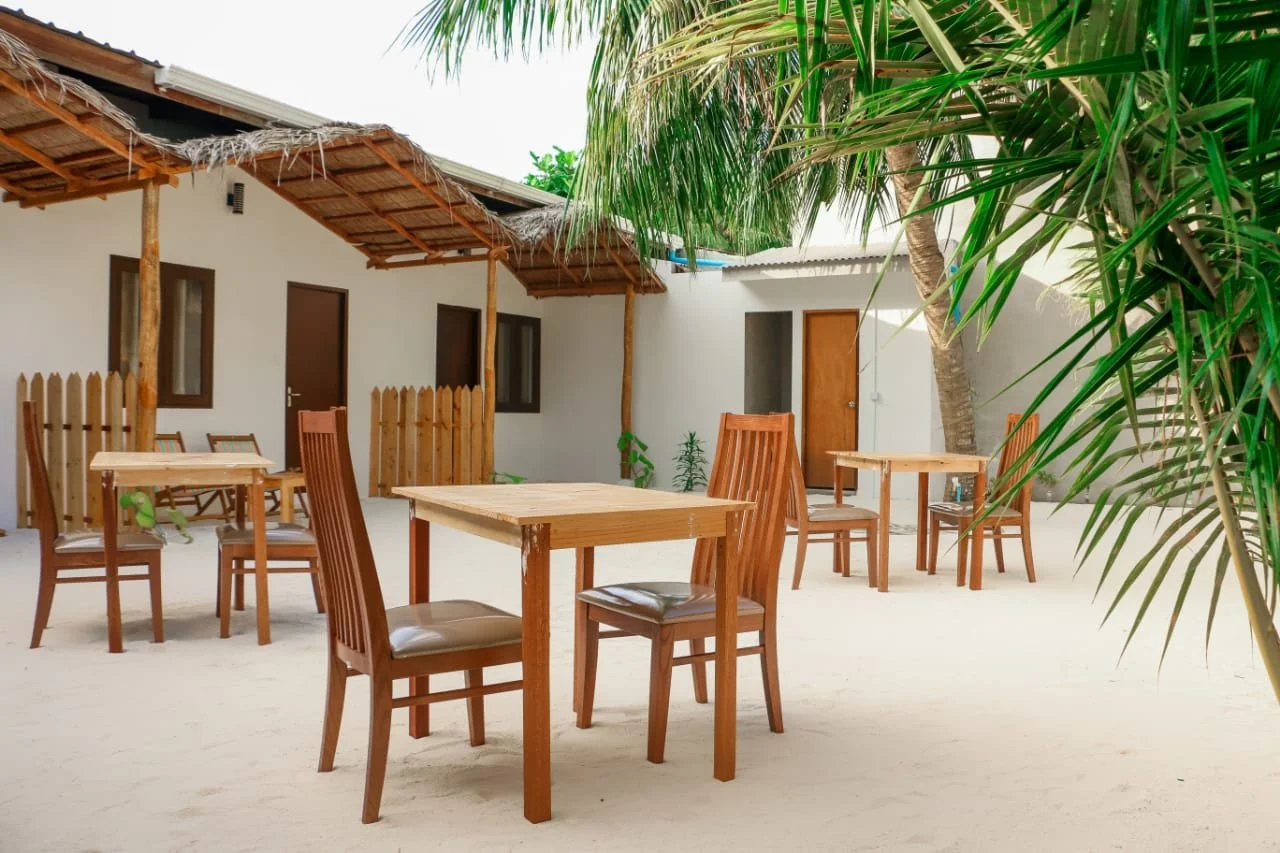A Contemporary Maldives Guest House with a touch of Tradition and Culture
Maldives - The Land of Sun, Sand & Sea has been known among travelers and vacation goers as the destination of choice for their holidays. While this has been the case for the past 50 years with the resorts and the Guest houses that were opened 14 years ago, one particularly important aspect of Maldives is left unexplored. That is the culture of its people and rich traditions that goes back thousands of years.
We at The Castaway Retreat, opened our doors in 2018, a guest house that seeks to fuse the contemporary Maldives with the culture and traditions. The Guest house has been a preferred choice of stay for the curious traveler. With its sustainable approach in its design ie. Using recycled wood in its construction to sourcing the ingredients that used in the kitchen through what is grown locally. We believe the concept of living off of the land and giving back to the land is an essential aspect in Castaway’s philosophy.
The island and the location of the Castaway Retreat, in AA.Feridhoo, provides it an advantageous locale for its concept of exploring the Maldivian traditions, Heritage and Culture. The island is old and ancient. Signs of habitation can be seen as afar back as 300 years and allegedly 800 years. One of the most significant is that in the 18th century two west Africans settled in Feridhoo and brought their traditional drums (bodu beru) and the “vajiduvun” rites with them. Some of the current inhabitants of the island are descendants of these two west Africans.
Feridhoo has also given rise to several legends and folktales of the Maldivian culture. One legend that stands out is the legend of the first tuna. Tuna, along with the coconut palm are two of the most fundamental Maldivian things of its people. It is the essence and the heart of its culture.
Recounted below is the story of the first tuna as collected by Xavier Romero Frías in his book “THE MALDIVE ISLANDERS, A Study of the Popular Culture of an Ancient. Ocean Kingdom”
Tuna
The essence of Maldivian Cuisine
The First Tunas
“Long ago, in the island of Feridhoo in Ari Atoll, lived a famous navigator (mālimi) called Boḍu Niyami Takurufānu. One day he went on a trading journey with his ship and on the third day at sea his crew caught a big fiyala (Coryphaena hippurus). This is a large pelagic fish with very tasty flesh and whose head is considered a delicacy.
Boḍu Niyami, who happened to be up the mast at that time busy with his astronomical calculations, called down to his men and told them to keep the head of the fish for him. However, when he came down from the mast with his instruments, he found out that, after boiling the fish, someone from the crew had already eaten the head and, after picking it clean, had thrown it to the sea. Then Boḍu Niyami flew into a rage and refused to give indications to the helmsman.
When the latter insisted, the outraged navigator said: “Go towards the head of the fiyala!” In this manner they sailed for eighty eight days until they reached the giant black-coral tree at the edge of the world. (The actual Antipatharia or black coral (enderi) doesn’t rise above sea level like this mythical tree. It lives at a depth of about 20 m and is related to the Gorgonids. Its skeleton, made of black keratin, is very appreciated by local jewelers)
It was a frightening place. The current was very strong and huge masses of water were falling in a big roar down the edge beyond the black tree. The crew was so scared that, in despair, they threw a line and fastened the ship to one of the branches of the huge tree. Following this, they fell down on their knees begging Boḍu Niyami to save them.
Finally the navigator, seeing the poor sailors so helpless and frightened, told them that his anger was gone, but that they would have to wait some time before the wind and the tide became favorable. Although the anxious crew spent a sleepless night, the next morning, they were pleasantly surprised. The sea had become calm and there were some strange big fishes leaping in the waters close to the giant tree.
Boḍu Niyami thought: “This is a beautiful fat fish and its flesh must be good and firm.” So he took a piece of parchment and traced on it its figure. Then he recited some magic words over it to capture the souls of the mysterious fish. After this he rolled the drawing, put it into a bamboo flask and sealed it. After three days passed and the wind became favorable, the ship sailed back towards the Maldives and a school of the strange fish followed in its wake.
After sailing for eighty eight days they reached Tiladummati Atoll and the school of fish had increased in numbers to such an extent that there was barely free water around the ship and some of the fish jumped onto the boat’s deck. As they approached the Baraveli Kaṇḍu, north of Ari Atoll, the crew saw something that looked like two huge rocks rising out of the sea directly ahead of them. Boḍu Niyami realized that those were the pincers of the Queen of the Hermit Crabs and that she had come up from the depths attracted by the huge numbers of beautiful fish following his ship.
Then this mighty navigator quickly realized that he had to do something to send the whole school of fish towards the bottom of the ocean immediately, otherwise the giant hermit crab might catch his ship instead of the fish. Thus, Boḍu Niyami quickly took the rolled parchment out of the sealed bamboo flask and, after attaching a weight to it, threw the magical drawing into the dark waters as far away from his ship as he could.
The crew watched in relief as the school of fish disappeared into the blue depths and the pincers of the Queen of the Hermit Crabs sank out of sight. After arriving to Feridhoo without further incident, Boḍu Niyami went ashore to sleep. On the next morning he sailed on his fishing boat to the west of his island and threw the empty bamboo flask into the ocean. Since then, at any time of the year, there are schools of skipjack tuna in those seas.”
People in Feridhoo claim that Boḍu Niyami Takurufānu’s tomb can still be seen; apparently, two low sand hills on the island mark the place where he built his traveling ship. However, it is not unlikely that these mounds might actually be the remainders of an ancient Buddhist Stupa.
The Castaway Retreat blends this rich tradition and culture with modern amenities to give its visitors and guests all the modern conveniences and comforts while being immersed in a traditional and cultural setting.


